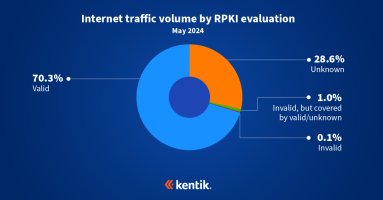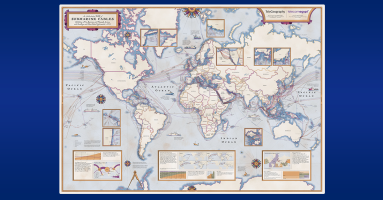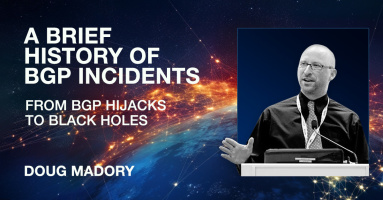
Blog Highlights












Introducing Kentik AI Advisor, a powerful new AI designed to deeply understand your network, reason through complex issues, and deliver clear, actionable guidance for designing, operating, and protecting your networks. By autonomously querying Kentik’s rich telemetry and tools, it explains what’s happening, why it matters, and what to do next — from troubleshooting and capacity planning to cost optimization and risk mitigation.
Kentik CEO and co-founder Avi Freedman explains why observability is not enough in the age of AI.
Kentik and ServiceNow are teaming up to bring network intelligence to the ServiceNow® AI Platform. This integration enables ServiceNow ITOM customers, even those without deep network expertise, to answer questions about connectivity, performance, and more.
Today, we’re excited to announce the launch of Kentik’s Cloud Latency Map, a public service that uses Kentik Synthetics to continuously measure latency between the regions of the biggest cloud providers.
Balancing cost, performance, and security in cloud infrastructure is challenging, but cloud-mature companies are proving it’s possible to optimize without compromise — here’s how they do it.
Multi-cloud visibility is a challenge for most IT teams. It requires diverse telemetry and robust network observability to see your application traffic over networks you own, and networks you don’t. Kentik unifies telemetry from multiple cloud providers and the public internet into one place to give IT teams the ability to monitor and troubleshoot application performance across AWS, Azure, Google, and Oracle clouds, along with the public internet, for real-time and historical data analysis.
In this blog post, BGP experts Doug Madory of Kentik and Job Snijders of Fastly review the latest RPKI ROV deployment metrics in light of a major milestone.
Kentik Data Explorer is a powerful tool designed for engineers managing complex environments. It provides comprehensive visibility across various cloud platforms by ingesting and enriching telemetry data from sources like AWS, Google Cloud, and Azure, and with the ability to explore data through granular filters and dimensions, engineers can quickly analyze cloud performance, detect security threats, and control costs in real-time exploration and historically.
Is SNMP on life support, or is it as relevant today as ever? The answer is more complicated than a simple yes or no. SNMP is reliable, customizable, and very widely supported. However, SNMP has some serious limitations, especially for modern network monitoring — limitations that streaming telemetry solves. In this post, learn about the advantages and drawbacks of SNMP and streaming telemetry and why they should both be a part of a network visibility strategy.
Under the waves at the bottom of the Earth’s oceans are almost 1.5 million kilometers of submarine fiber optic cables. Going unnoticed by most everyone in the world, these cables underpin the entire global internet and our modern information age. In this post, Phil Gervasi explains the technology, politics, environmental impact, and economics of submarine telecommunications cables.
Stretching back to the AS7007 leak of 1997, this comprehensive blog post covers the most notable and significant BGP incidents in the history of the internet, from traffic-disrupting BGP leaks to crypto-stealing BGP hijacks.
Border Gateway Protocol (BGP) is a policy-based routing protocol that has long been an established part of the Internet infrastructure. Understanding BGP helps explain Internet interconnectivity and is key to controlling your own destiny on the Internet. With this post we kick off an occasional series explaining who can benefit from using BGP, how it’s used, and the ins and outs of BGP configuration.











